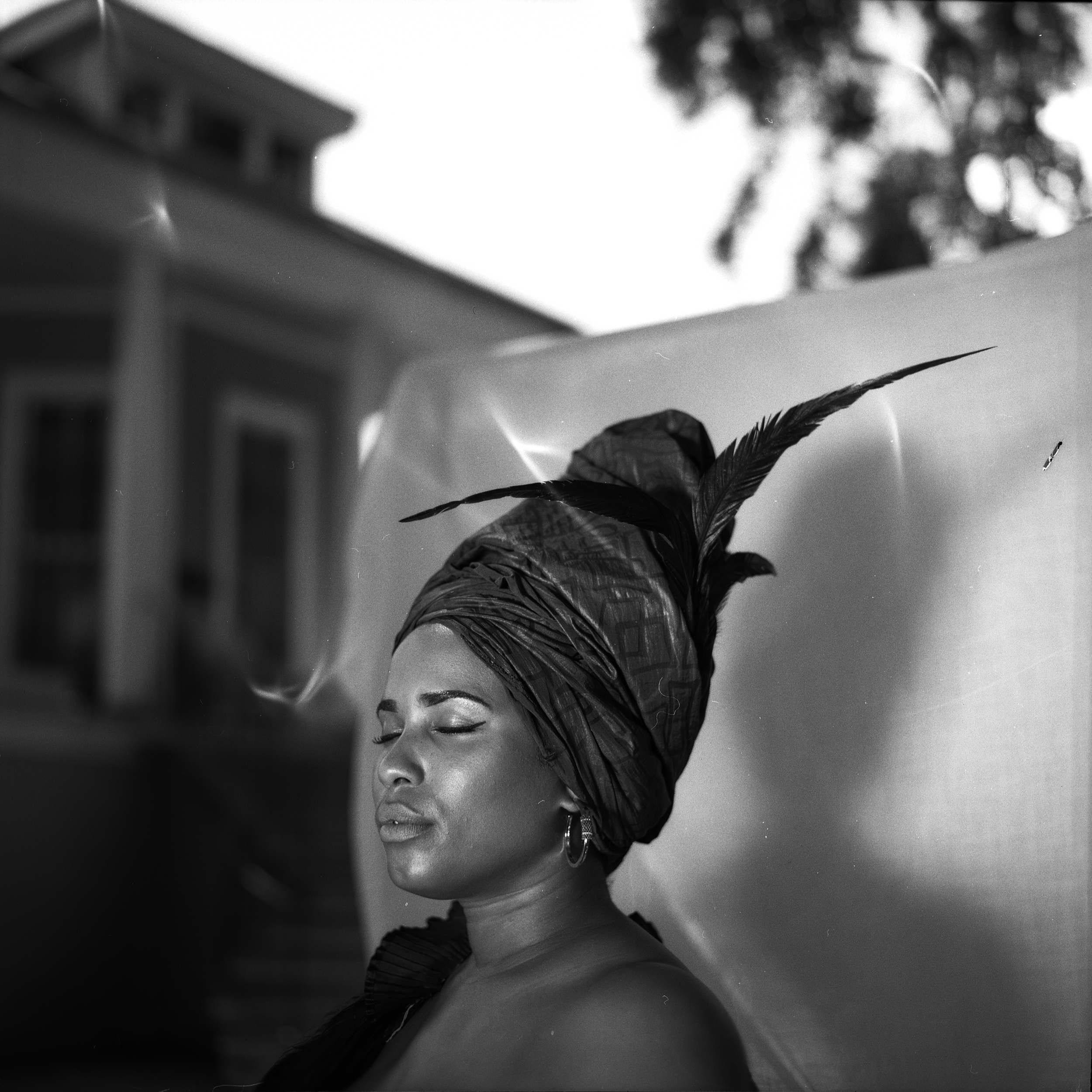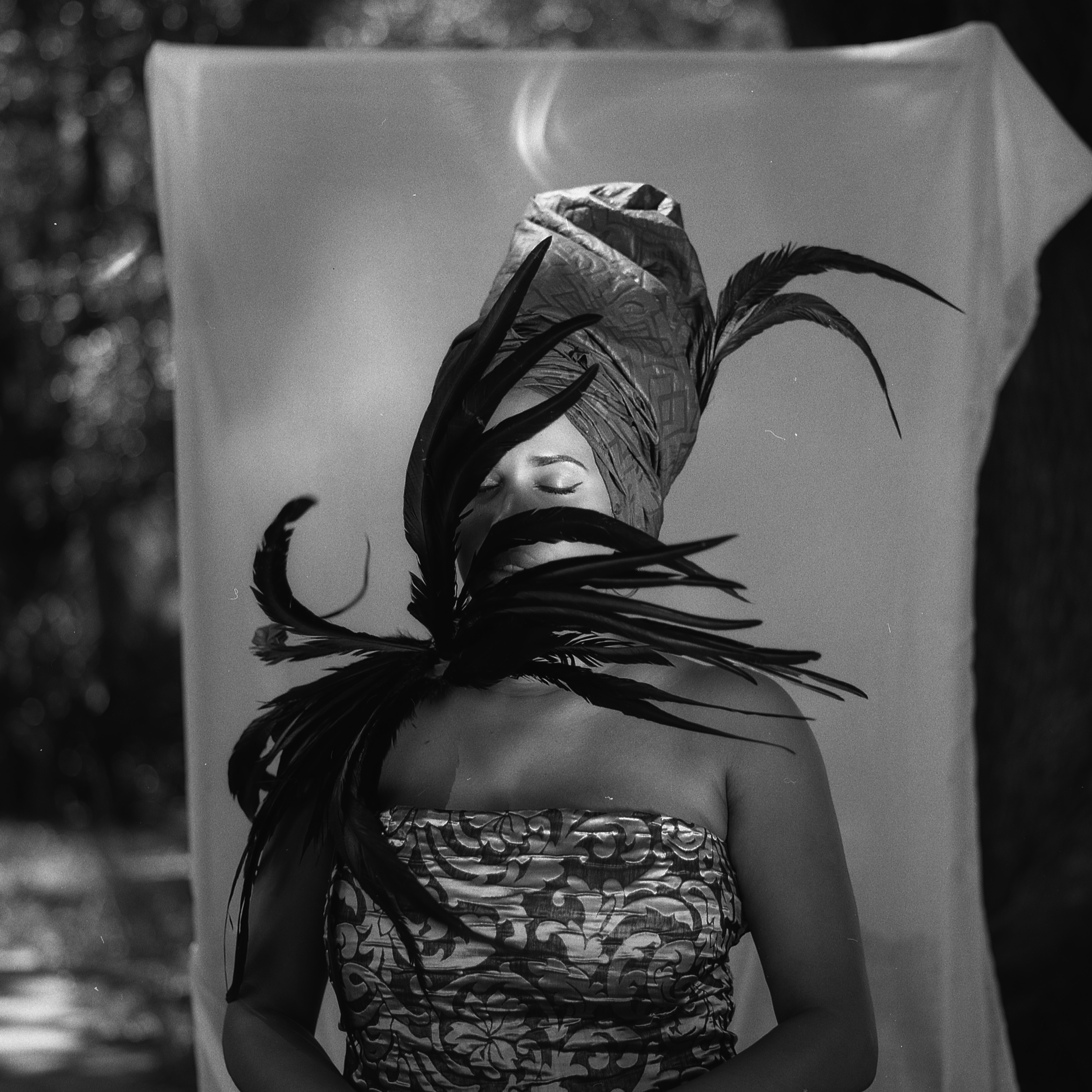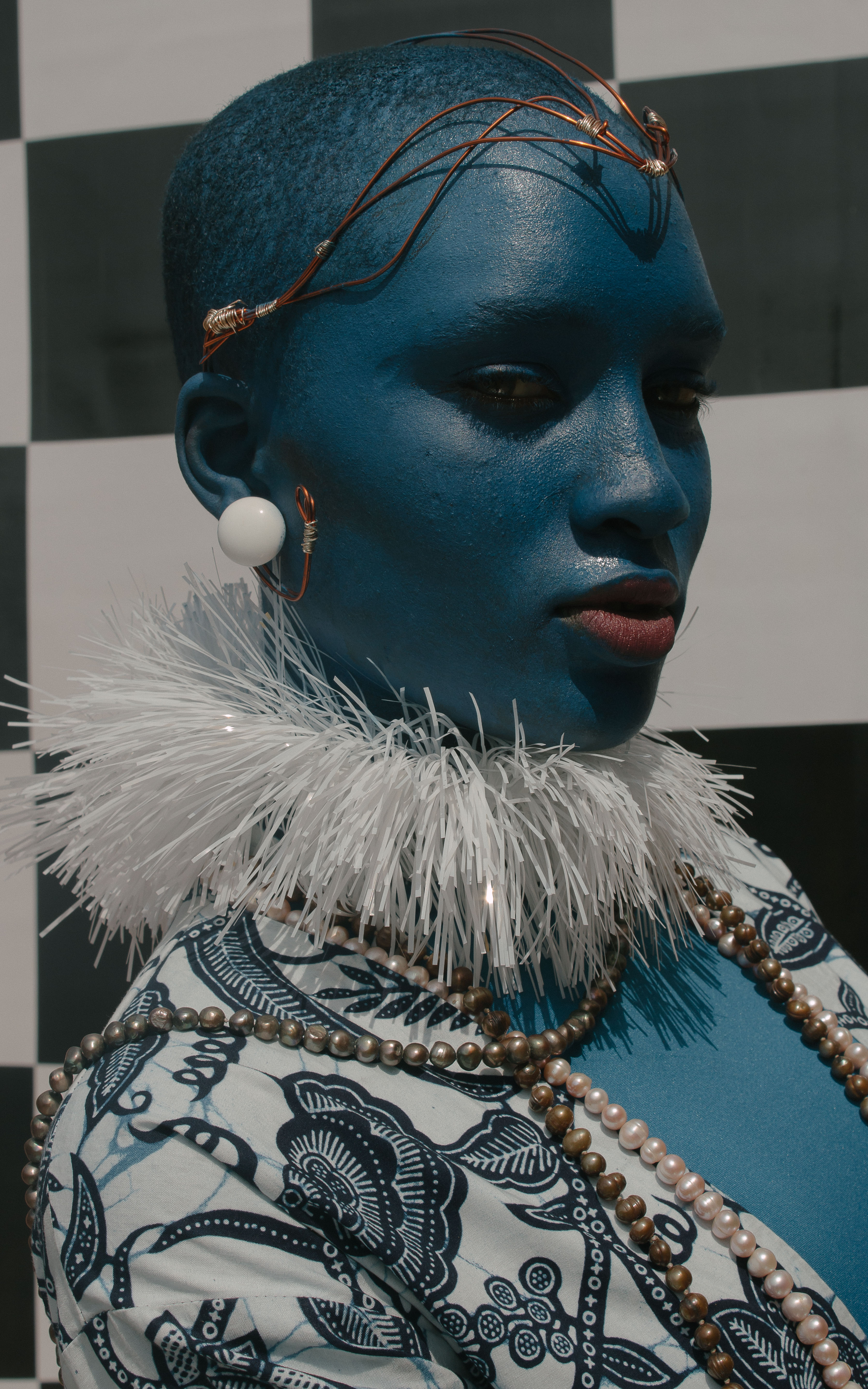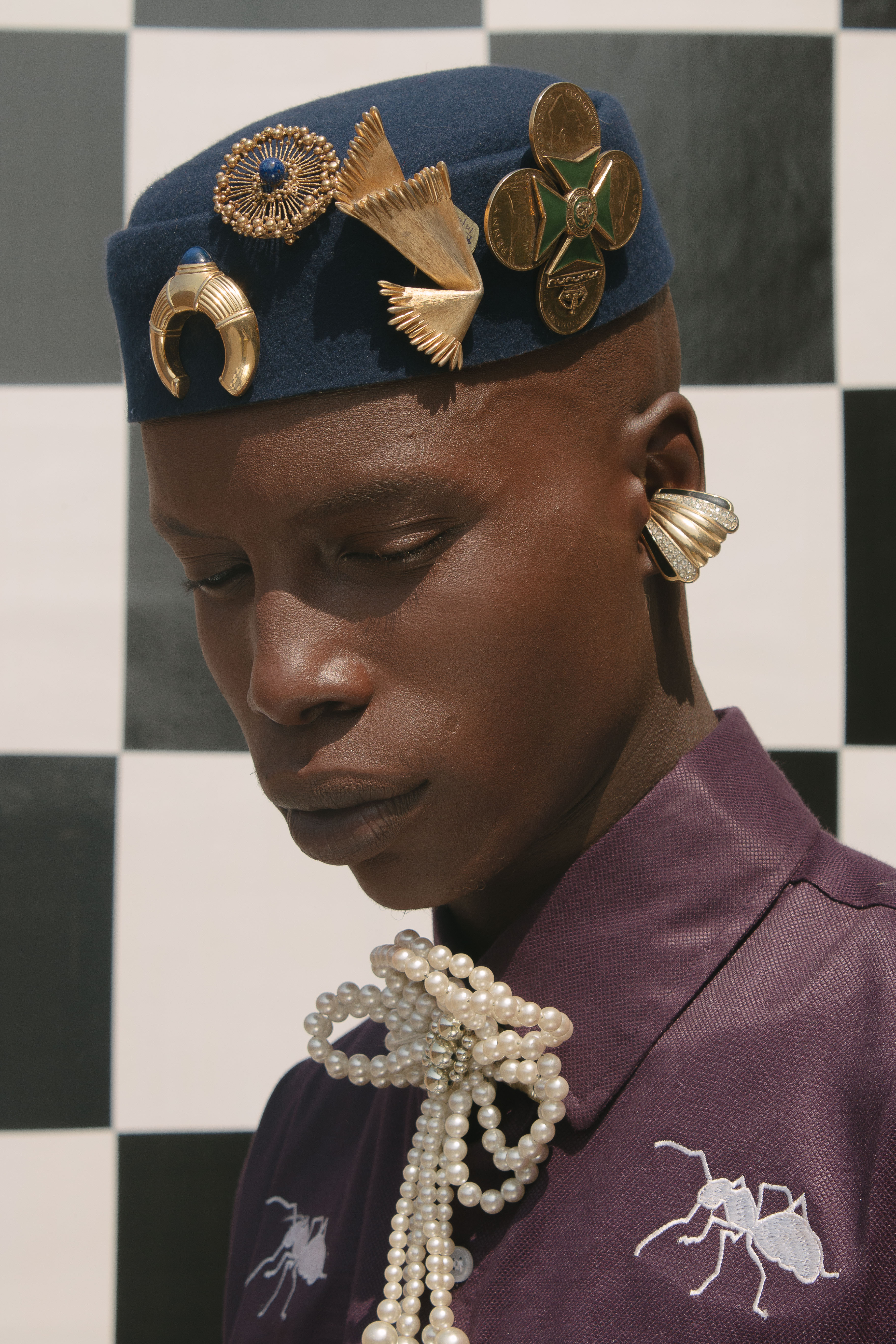Symbolism channelling various forms of energy and making cosmological references. An extraterrestrial visual palate. This is what defines the work of makeup artist Kristina Nichol.
Describing herself as an alien, Kristina uses her own face and body, as well as those of models, as blank canvases for her out of this world looks. In our interview, she unpacks how her work is primarily inspired by emotion. “I use this to fuel my creativity,” Kristina explains, “I see and feel in colour. To me this is necessary as a makeup artist because I’m constantly coming into contact with humans and needing to transform/translate their energy as I paint their face.”

Fascinated with makeup and reworking the parameters of beauty, her practice actively unhinges the structures that dictate the purpose of makeup and the conventions for its application. This is directly communicated with her hashtags and professional Instagram account displaying the words ‘UNCONVENTIONAL BEAUTY’. Wild brush strokes, bleeding foreheads, and brightly coloured blush that is massaged into clouds on the skin. Gold shimmering eyebrows, and pink eyelashes. Models are injected with an alien glow.
For Kristina, presenting alternative and varied forms of beauty is a necessity. “I think it’s important because it makes people think. It’s not the norm, and as a makeup artist it’s important to use it as a tool to provoke and challenge the superficial mainstream ideals of beauty that we’re constantly held up against.” Having collaborated with recent Future 76 artist Boipelo Khunou, on a project titled ‘Subtle Care’, we see how this approach applies in an artistic manner. With shapes and colours being at the centre of the looks. Recently Kristina also took on the role of makeup artist for the latest Bubblegum Club cover, ‘Turn Up The Volume and Queer the dancefloor‘. This demonstrates Kristina’s versatility, while still keeping her signature touch recognizable.

“I feel like we’re constantly transforming, and changing. Life is a difficult experience, but I learn more with time how to find peace in myself, and this peace has allowed me to accept myself and accept how I see and do things.” With this in mind, Kristina is working on a series that deals with the human experience and will be collaborating with a writer (who will also be the model) as well as a young photographer. “I’m so excited for this series. it’s the biggest personal project I’ve worked on so far, big big things.”
To keep up with Kristina’s work follow her on Instagram.
“Beauty already exists within us. Don’t chase it, embrace it.”












 Obasi’s work takes the form of a gestural film as there is no audible dialogue and yet, the gestures and narrative are well woven together so that the simple storyline cannot be construed as one of haphazard play (every scene has been well thought out). A theme that is carried throughout the film is that of fashion. We see the male character played by
Obasi’s work takes the form of a gestural film as there is no audible dialogue and yet, the gestures and narrative are well woven together so that the simple storyline cannot be construed as one of haphazard play (every scene has been well thought out). A theme that is carried throughout the film is that of fashion. We see the male character played by  A scene lingers in a dark room with red light and as we see the last of the alien’s stay the lighting takes on a blue, extra-terrestrial statement. The darkroom where the male character develops his images of the fashion shoot act as a possible signifier towards an act of creating a physical object – a proof of what had transpired – an alien visiting Lagos. Obasi ends off his piece with the alien in the same setting she was originally found and the viewer assumes that it is the last that will be seen or heard from the alien. The upbeat soundtrack that flows through the piece assists in making this film light-hearted and the viewer does not perceive her voyage home as one that should be taken in with sadness.
A scene lingers in a dark room with red light and as we see the last of the alien’s stay the lighting takes on a blue, extra-terrestrial statement. The darkroom where the male character develops his images of the fashion shoot act as a possible signifier towards an act of creating a physical object – a proof of what had transpired – an alien visiting Lagos. Obasi ends off his piece with the alien in the same setting she was originally found and the viewer assumes that it is the last that will be seen or heard from the alien. The upbeat soundtrack that flows through the piece assists in making this film light-hearted and the viewer does not perceive her voyage home as one that should be taken in with sadness. Obasi’s contemporary Afro Futurist film is vibrant and celebrates Nigerian culture as well as focuses on African fashion and the energy that it carries. His considerations of the colour of lighting and the possible symbolism connected, adds another layer to this work. His ability to keep a concise narrative throughout the film despite having no audible dialogue verges on brilliance. I look forward to his next offering.
Obasi’s contemporary Afro Futurist film is vibrant and celebrates Nigerian culture as well as focuses on African fashion and the energy that it carries. His considerations of the colour of lighting and the possible symbolism connected, adds another layer to this work. His ability to keep a concise narrative throughout the film despite having no audible dialogue verges on brilliance. I look forward to his next offering.



